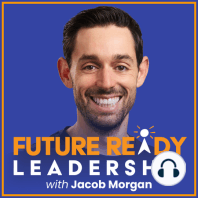76 min listen

Advice From The CEO Whisperer On What To Do With Toxic Employees, How To Set A Vivid Vision, & How Leaders Can Improve
Advice From The CEO Whisperer On What To Do With Toxic Employees, How To Set A Vivid Vision, & How Leaders Can Improve
ratings:
Length:
60 minutes
Released:
Sep 27, 2021
Format:
Podcast episode
Description
Cameron Herald is the bestselling author of several books including Meetings Suck and Vivid Vision: A Remarkable Tool for Aligning Your Business Around a Shared Vision of the Future. He is the former COO of 1-800-Got-Junk and in the six years he was in that position he brought the company from $2 million to $106 million in annual revenue and the company was named the #2 company in Canada people wanted to work for. Cameron is also known as the CEO Whisperer and he has coached a lot of leaders around the world. When it comes to looking for a coach, Cameron says leaders have to know what they are looking for because, “the world's littered with coaches right now. And you have to be very careful and understand what it is you're selecting.” Cameron focuses on the entrepreneurial operations, execution, and culture space. He teaches CEOs how to build world-class company cultures in order to propel growth. He compares business coaches with sports coaches and says just as you would have different coaches for strength, conditioning, mindset, health, etc...there are also different coaches for business-related skills and techniques. So make sure you know what you want to work on and seek out someone specifically coaching in that area. What is vivid vision and why is it so important for every leader When Cameron is working with a leader, he always starts with a concept called vivid vision. He has the leader lean out three years into the future and has them describe all aspects of their company as if they had traveled in a time machine and were walking around their company three years in the future--the culture, the technology, the operations, the marketing, etc… “I'm trying to get the CEO to visualize the company in its finished state. And then we can reverse engineer every sentence to figure out what to do to make each sentence come true. And then, much like building a home where you build the foundation, and you put up the walls, and then you put in the electrical and the plumbing, and then you put in the drywall, there's a formula for building out a business, in the same way you start with the foundational building blocks, and you grow from there. Many entrepreneurs get distracted by the big shiny object, right? Some, they just read something in a book, they want to do it now. But they forget about building the core basis of the business first.” Why three years? Just looking one year out, there wouldn’t be enough change, it would be pretty similar to the present moment. And more than three years can be too far out to really wrap your head around, and too far out to really take seriously and get excited about. The vivid vision is the CEOs responsibility to create, roll it out, and get other people to buy into it. “If the CEO is very clear on where we're going, other people can figure out the plan to help make that come true.” Or for those people who don’t buy into the vision, they can see that the company is not a good fit for them and they can find someplace that works better for them. What is the relationship between CEO and COO Cameron uses an analogy of building a home when talking about the relationship between the CEO and COO. The CEO is the homeowner who wants to build the home and the COO is the general contractor that is hired to take the homeowner’s ideas and make the vision come true. “So the COO’s job is to take the vivid vision from the entrepreneur, the CEO, and start crafting the plan and the team and the operational bench to then execute on that vision and make that happen. The COO’s job is to reverse engineer the dream or the goals of the CEO.” As Cameron points out a good COO is trying to get more done with less people, faster. They try to make the business run more efficiently, they try to increase revenue per employee, and optimize processes. Whereas a CEO doesn’t spend so much time thinking about those types of things. --------------- There are 6 trends that are transforming leadership forever do you know what they
Released:
Sep 27, 2021
Format:
Podcast episode
Titles in the series (100)
Digital Upskilling: How PwC Is Ensuring No Employees Get Left Behind In The Digital Revolution: With Mike Fenlon, Chief People Officer at PwC US by Great Leadership With Jacob Morgan